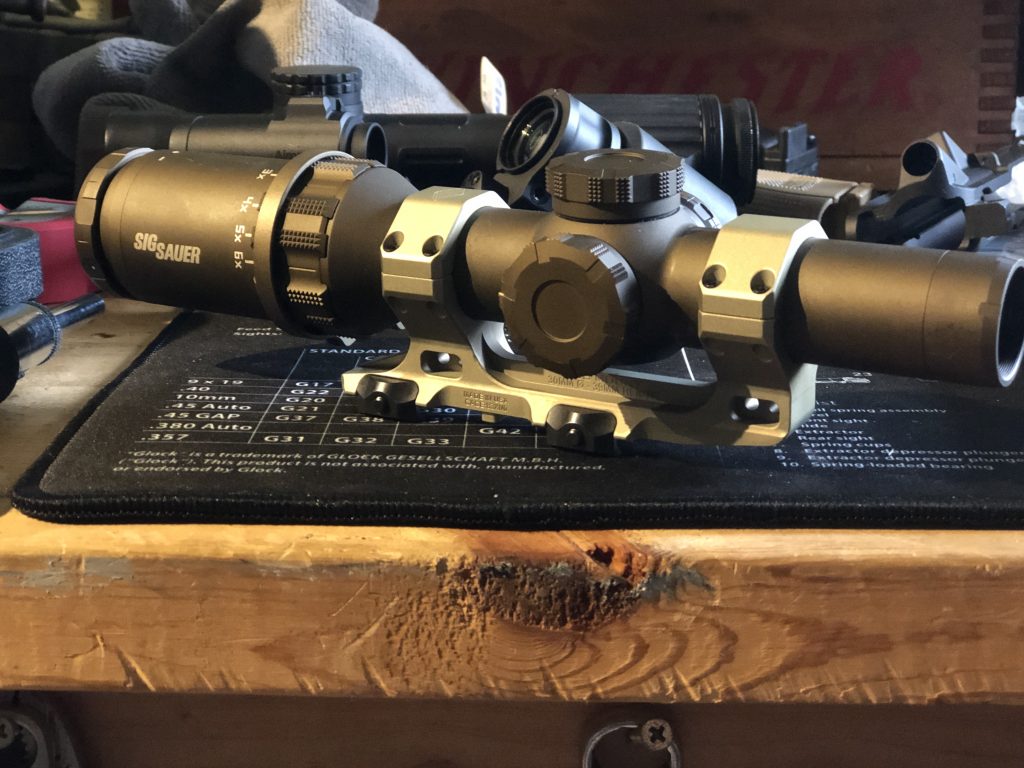On first glance at first and second focal plane optics, the first focal plane seems like a no-brainer. The reticles have more data, more detail, and scale with the target image so that the data on the target is always appropriately sized. Solid state reticles in both scopes mean that you really don’t need any illumination to aim anyway under most conditions. It can certainly help to keep the eye focused on the center but it isn’t a necessity in any measure.
But you probably need a second focal plane optic.
A few weeks back, Jack and I discussed how the LPVO and the red dot have softly switched positions in mainstream carbine use. The LPCO is now, arguably, the standard to meet for an optic suite. Both US ground services are fielding them, several models, for good reasons.
Advertisement — Continue Reading Below
To expand further on this topic in text form, I believe the SFP 1-6 is the current general purpose optic standard to look to.
Why you might need the SFP
The last ‘ gold standard’ optic, in an anything but standardized market, is arguably the Aimpoint PRO and/or EOTech EXPS2. Throw on the optional magnifiers and you have a highly capable carbine. Not going to the absolute top of the optics tier with dots allows for some significant cost savings with very little decrease in performance. By not going with an EXPS3 model or a CompM4/5 the user can save without sacrifice.
Advertisement — Continue Reading Below

The same is true of LPVOs and you can access military grade models for nearly the same spend as a dot and magnifier.
The rise in LPVO quality and the decreasing costs mean that the same roughly $1100-$1300 (current market estimates) spend that get you the 1x/3x red dot can put you into an excellent quality second focal plane optic.
Advertisement — Continue Reading Below
Most users, LEO, civilian, and military alike, are served by the matching and exceeding of what the red dot or fixed power ACOG gave them. The SFP LPVOs like the Tango6T, VUDU, and Razor II-E combine the bright aiming dot with greater variable magnification for enhanced sight picture and target ID.
“But, Keith…” you say smugly, pointing at the US DoD optics, “the Army and Marines have selected front focal plane optics.”
Correct.
Advertisement — Continue Reading Below
I know why, too. For them it makes sense. They have specific weapons and ammunition for which front focal plane reticles can be matched. Several SFP models are in inventories too with high performance units.
But most users, not law enforcement, not civilians, and not military personnel using anything outside the normal inventory of rifle and ammo combined (IE: personal weapons on personal time) benefit less from a BDC equipped FFP optics. My M855A1 BDC doesn’t do me much if I’m shooting M193 out of a different barrel length or twist. I have to reshoot and dope the scope to use the scale with my ammo. New ammo, reshoot.
But most shooting, personal and professional, doesn’t require that. Most shooting is inside 300 yards, it doesn’t require much in the way of offset precision holds to make good hits.
Advertisement — Continue Reading Below

So what you need is an aiming point and the assist that zoom provides, a bright aiming point is a bonus. Scope like the S-VPS above offer that. They can operate quick and close and still make shots at 300, 400, 500, even 600 yards with just a little bit of knowledge of ranging and hold over.
In my experience teaching, that natural tendency to holdover at distance and a reasonable ability to estimate range are fairly simple. Additionally in my experience, shooters will use maximum magnification on the optic at distances so adding a very simple hold over estimate for ranges doesn’t overcomplicate a reticle and won’t disrupt the simplicity of its main role. That role being to give an enhanced detail sight picture but not complicate the sight.
Advertisement — Continue Reading Below















